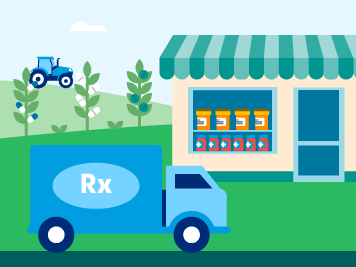Medications shouldn’t break the bank, so why do they? Specialty medications make up just 2% of pharmacy claims, but account for 50% of overall pharmacy spending. That makes sense when you consider that the current price of a specialty prescription is $3,500 per month! Similarly, gene therapy drugs can range from $250,000 to $2 million a year! That’s a tough pill to swallow. It’s even more frustrating to know there is little transparency in how these prices are set and minimal opportunity for employers to negotiate these prices.
We are no strangers to inflation for goods and services in the current market. People using prescription drugs have been subject to inflation rates for years. According to AHIP the largest part of the healthcare dollar is spent on prescription drugs1.
What drives pharmacy pricing?
The pricing of the pharmacy industry is complex. It boils down to two primary drivers: unit cost and utilization. Unit cost is simply what each drug costs, and the average cost across all drugs is increasing rapidly for two reasons. First, pharmaceutical manufacturers typically increase the price of existing drugs each year, and second, the drug development pipeline is focused on high-cost specialty drugs, which drives the average cost of new drugs materially higher than they used to be.
Utilization is typically impacted by the pharmacy plan design and how well it engages employees to become better consumers. Advertising also plays a role in utilization. Many pharmaceutical companies spend more on advertising than research and development, which leads to increased consumer utilization.



